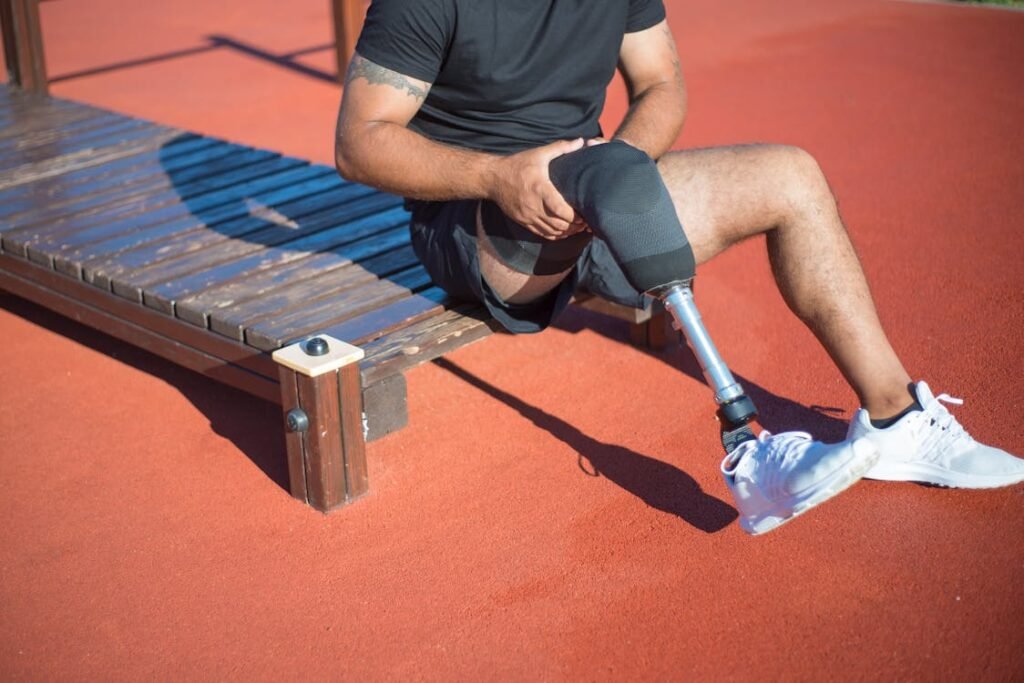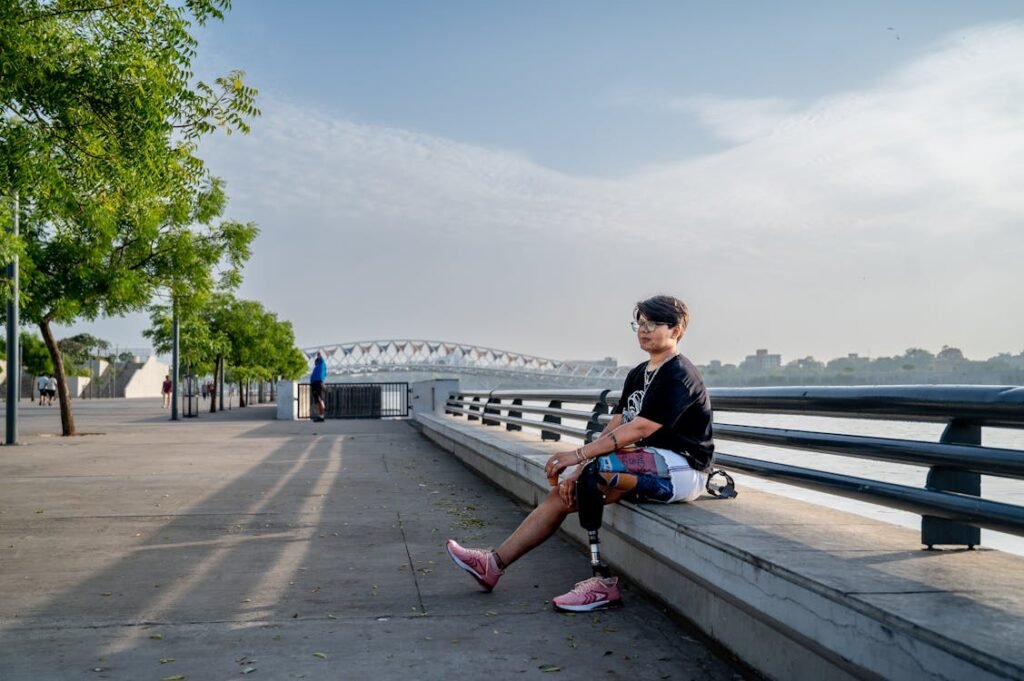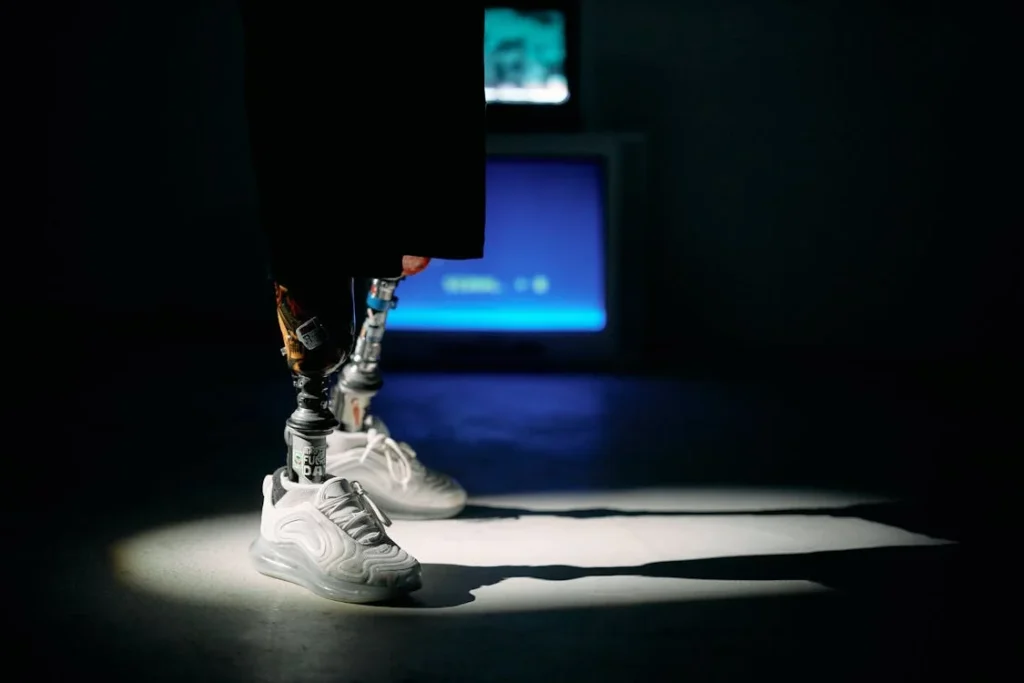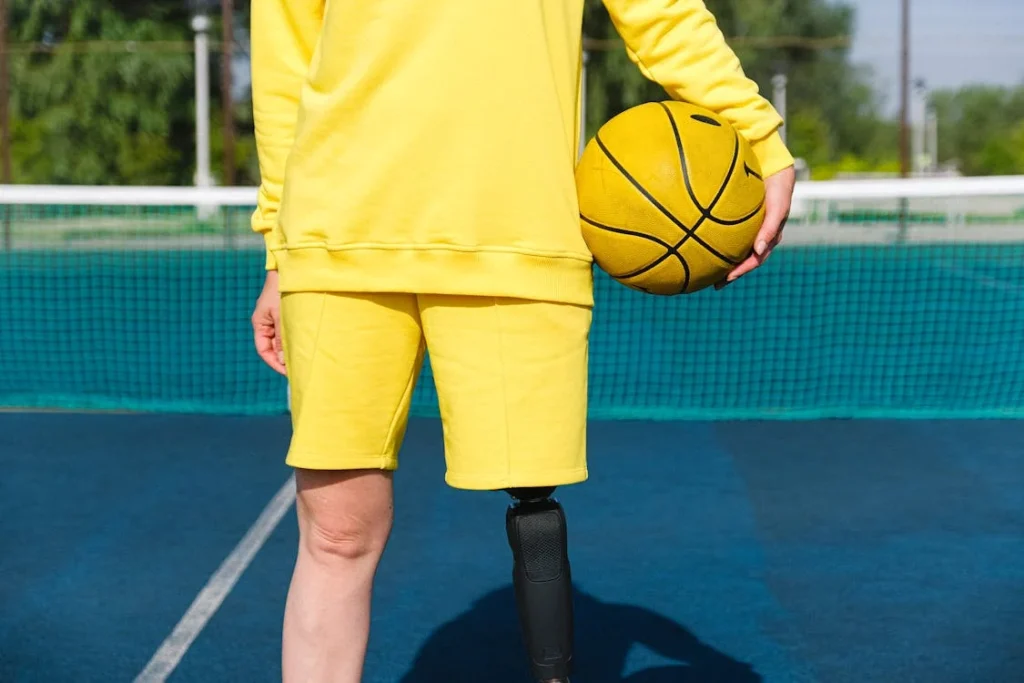Designing prosthetics for children is unlike anything else in the world of medical engineering. It’s not just about creating a limb that fits. It’s about building something that will move with a child’s imagination, support a growing body, and adapt to the pure energy of childhood.
Children aren’t just small adults. Their bodies change constantly. One day, they’re crawling on the floor, and the next, they’re running across a playground. And while most prosthetic designs work well for fully grown bodies, they often fall short when applied to little ones. That’s where pediatric prosthetic biomechanics comes in—an area where science, design, and real-life experience must come together to solve a deeply human problem.

Understanding Pediatric Biomechanics
When we talk about biomechanics in children, we aren’t just looking at how limbs move. We’re talking about a living, growing system that is still figuring itself out.
Bones are developing. Muscles are strengthening. Nerves are learning how to talk to each other. Everything is in motion, all the time. And that’s the real challenge.
Why Growth Changes Everything
Adults reach a point where their bodies stabilize. A prosthetic built for an adult can last for years with minimal adjustments. But for a child, this isn’t the case. A leg that fits perfectly today might be too short next month.
As bones grow, joints change shape. Muscle tone varies. Even walking patterns evolve over time. This constant change makes designing pediatric prosthetics far more complex than adult ones.
You can’t just shrink an adult prosthesis and expect it to work for a child. The entire structure must be rethought. Materials need to be lighter.
The fit must be softer. Components should be easier to adjust or replace. Growth isn’t a one-time event—it’s an ongoing process that demands flexibility in design.
The Role of Movement and Play
Children move differently than adults. Their movements are more unpredictable, more energetic, and less restrained. They jump, twist, crawl, roll, and climb.
A good prosthesis must allow for all of that. It must support free and natural movement without restricting the child or weighing them down.
This means engineers need to understand how children move at different stages of life. A two-year-old learning to walk has different needs than a ten-year-old playing sports.
Designing for this wide range of motion requires attention to small details. Joints in a prosthetic limb must offer the right resistance.
The socket must support rapid, sometimes jerky motion. The foot needs to handle various surfaces, from sand to pavement.
How Kids Learn to Walk (and How Prosthetics Must Help)
Walking is not automatic. Babies learn by trial and error, step by wobbly step. Children with limb differences go through a similar learning curve, but with added challenges.
A well-designed prosthetic can either help them build confidence or frustrate their progress.
Biomechanically, the gait cycle—a complete step from heel to toe—must be smooth and balanced. If the prosthesis doesn’t allow for this natural flow, it creates a limp or imbalance.
That, in turn, can lead to long-term issues in the spine, hips, or knees.
Designing for gait in children requires careful study. The limb must respond to a child’s unique rhythm and pace. Some children walk faster, others slower.
Some toe-walk, others have uneven strides. Engineers must account for all these differences when creating a functional prosthesis.
Understanding Pressure and Comfort
Another part of biomechanics is how pressure is distributed across the prosthetic socket—the part that touches the child’s residual limb. If pressure points are uneven, it leads to discomfort or even injury.
Children may not always have the words to explain that something feels wrong. They may just stop wearing the device. That’s why comfort isn’t just a luxury—it’s essential.
Designers often use soft liners and gel padding to help distribute pressure. Sensors and digital tools can measure how weight is distributed while the child walks or runs.
These tools help fine-tune the fit, making the prosthesis feel more like a natural part of the body.

Designing for Real Life: Function Before Form
When designing prosthetics for children, it’s easy to get caught up in how the limb looks. Of course, appearance matters—especially for older children who care about fitting in. But function must always come first.
A prosthesis that looks realistic but doesn’t work well is not truly helpful. Children need tools that let them live fully, not just blend in.
Lightweight Design for Growing Bodies
One of the first things to consider is weight. A child’s muscles are still developing, so the prosthesis must be as light as possible without sacrificing strength.
A heavy limb can throw off balance, make walking harder, and cause fatigue. Children won’t use something that tires them out quickly.
Engineers often turn to materials like carbon fiber, thermoplastics, and titanium to reduce weight while keeping the prosthesis strong and flexible.
Every gram counts. And the lighter the limb, the more naturally a child can move.
Weight distribution also matters. If too much weight is placed at the bottom of the prosthesis, it can swing oddly while walking.
That affects stride and balance. A smart design spreads weight evenly to mimic the feeling of a natural limb.
Making Adjustments Easy
Because kids grow quickly, a good pediatric prosthesis must be easy to adjust. That doesn’t just mean changing the length.
Sometimes, the entire shape of the limb needs to change slightly to match how the child is developing.
Modular designs—where parts can be swapped in and out—are especially helpful. This lets families avoid the cost and stress of completely replacing the prosthetic every few months.
With modular systems, clinicians can simply update the parts that no longer fit while keeping the rest intact.
Some modern designs even include adjustable components that can expand slightly with growth. While these aren’t a full solution, they can buy precious time between fittings.
The Challenge of Fitting Active Children
Kids are rough on everything. Their shoes wear out faster. Their clothes get torn. And their prosthetics take a beating too. Whether they’re falling on the playground or riding a bike, children push their limits every day.
A prosthetic limb must be built to survive that. That means strong joints, scratch-resistant surfaces, and secure fastenings that don’t slip even during intense movement.
It also means thinking ahead to what might break—not just what might wear out.
The best designs also keep in mind that kids will test boundaries. They might try running before they’re ready, or use the prosthetic in ways no adult ever would.
That’s not a bad thing. It’s part of learning. So the prosthesis must not just allow safe movement—it must encourage exploration while protecting the child from injury.
Emotional Design Matters Too
Even though function comes first, emotional design matters more than we often admit. A child might not care much about how a prosthetic looks when they’re very young.
But as they grow, they become more aware of how they’re different.
This is where color, texture, and even personalization come in. Giving children a say in how their prosthesis looks helps them feel more connected to it.
It becomes their tool, their companion—not just a medical device. Some kids want bright colors, patterns, or superhero themes. Others want it to be invisible.
What matters is the sense of ownership. A prosthetic limb should make a child feel more like themselves, not less.

The Importance of Early Intervention
Starting early makes a world of difference in how a child adapts to using a prosthesis. The earlier the fitting, the easier it is for the brain and body to work together naturally.
But early intervention isn’t just about getting a prosthesis on a child as quickly as possible—it’s about giving them the right tool at the right time in their development.
Fitting at the Right Age
Some children are born with limb differences. Others lose limbs due to accidents or illness. Either way, the fitting process should begin as soon as the child is physically ready and emotionally prepared.
That often means within the first year or two of life. While this may seem early, it helps the child include the prosthesis in their natural development process. It becomes part of how they explore the world, not something added later on.
The prosthesis must match their developmental stage. For infants and toddlers, simple designs that support crawling, sitting, and standing are enough.
As the child begins to walk, the prosthesis should adapt to support walking and eventually running. This step-by-step approach ensures the child gains confidence without being overwhelmed.
Encouraging Natural Use
Getting a prosthesis is just the beginning. The real work comes in helping the child use it naturally. This doesn’t happen overnight.
Children need physical therapy, occupational therapy, and support from their family and care team. They need time to build muscle memory and adjust to how the limb feels.
Biomechanically, the brain needs to learn how to control the limb—even if it isn’t connected by nerves. Visual feedback, balance training, and repetitive movement all help.
Children who start early adapt faster, not just physically but mentally and emotionally.
Even the shape of the prosthesis can encourage better use. For example, a curved foot shape helps simulate the rolling motion of walking. A soft, flexible knee joint can help the child feel safer when bending down or jumping.
Preventing Long-Term Issues
Starting early also helps prevent complications later. If a child waits too long to begin using a prosthesis, their muscles may develop unevenly.
Their posture might shift to one side. Their gait could become permanently unbalanced. These changes can cause pain, fatigue, and even joint problems in the future.
By intervening early, we can support healthy growth and movement. That includes helping the spine stay straight, ensuring the hips develop evenly, and protecting the knees from unnatural pressure.
It also helps with emotional development. Children who start early are more likely to see their prosthesis as normal. They’re less likely to hide it or feel embarrassed. They learn to move through the world with confidence.
The Role of Parents and Caregivers
None of this works without family support. Parents are the first line of encouragement. They help the child through frustration, celebrate small wins, and make sure the prosthesis is used every day.
This daily use is key to success. If the prosthesis sits in a corner, it doesn’t help anyone.
Parents also play a vital role in communication. A child may not be able to explain when something feels off, but a parent can often see the signs—like changes in behavior, posture, or walking.
Regular checkups with clinicians are essential, but day-to-day feedback from home is what keeps everything on track.

Customization: One Size Never Fits All
No two children are alike. That’s not just a sweet saying—it’s a fundamental truth that lies at the heart of pediatric prosthetic design.
Every child grows differently, moves differently, and interacts with the world in a unique way. That’s why customization is not just helpful in prosthetic biomechanics—it’s absolutely essential.
The Role of Residual Limb Shape and Condition
The starting point for customization is the residual limb—the part of the body where the prosthetic will attach. Some children have short residual limbs, others longer.
Some have bony ends, while others have soft tissue that can change shape over time. These differences affect how the socket is shaped, how the prosthesis connects, and how the child feels while wearing it.
A poorly fitted socket can cause skin irritation, pressure sores, and even long-term muscle damage. That’s why modern design often starts with a detailed 3D scan or mold of the child’s residual limb.
his ensures that every curve and contour is taken into account. The result is a socket that hugs the body just right—snug enough to stay in place, but soft enough to move with ease.
Considering the Child’s Lifestyle
Some children just want to walk and play. Others dream of dancing, swimming, or playing cricket. Each of these activities requires different movement, strength, and stability.
A child who plays sports will need more impact resistance and range of motion than one who mostly walks short distances.
That’s why lifestyle plays a major role in prosthetic design. Engineers and clinicians ask detailed questions about the child’s daily routine.
Do they go to school? Do they ride a bicycle? Do they live in a rural or urban setting? All these details influence material choices, joint flexibility, and even tread patterns on prosthetic feet.
It’s also why multiple prosthetics are sometimes needed. A child might have one device for daily use and another for athletic activities. This is similar to how someone might wear sneakers for walking and cleats for sports.
The Value of Personal Preferences
It’s easy to focus just on function and forget about the child’s own feelings. But a prosthesis is something a child wears every day.
It becomes part of their body image, their identity. That’s why their preferences matter, even if they seem small.
Maybe a child prefers a certain texture. Maybe they want a limb that matches their skin tone—or one that’s covered in their favorite cartoon character.
These details don’t change how the prosthetic works, but they can have a huge impact on how the child feels about using it.
When children feel included in the design process, they are more likely to wear the prosthesis regularly. And regular use leads to better biomechanics, improved balance, and stronger muscles.
Cultural and Social Considerations
Different cultures view prosthetics differently. In some places, there’s great acceptance and openness. In others, there may be more stigma or misunderstanding. This social context affects how a child feels about wearing a visible device.
Customization can help navigate this. For example, a more discreet design might help a child feel more comfortable in public.
Or a bold, expressive style might help them feel proud and empowered. The right choice depends on the individual child and their world.
By respecting these personal and cultural needs, prosthetic designers help children not just move better—but live better.

Evolving Technology in Pediatric Prosthetics
Technology is changing the way we build and fit prosthetics for children. What once took weeks or months to produce can now be done in days. What once fit awkwardly can now feel like a natural extension of the body.
With new tools, materials, and techniques, pediatric prosthetics are becoming more advanced, more comfortable, and more adaptable than ever before.
3D Printing and Rapid Prototyping
One of the biggest game changers is 3D printing. This technology allows prosthetic parts to be created quickly, accurately, and affordably.
For children, this means they can receive customized devices in a matter of days—not weeks. Since kids outgrow their prosthetics so quickly, this speed is critical.
3D printing also allows for experimentation. Designers can test different shapes, sizes, and features without committing to a full production run.
If a limb doesn’t feel quite right, it’s easy to make a quick tweak and print a new version. This flexibility leads to better-fitting, better-functioning prosthetics.
Some organizations are even using open-source models to let families and clinics print prosthetics locally.
This has the potential to change access in rural or underserved areas, where traditional manufacturing might not be possible.
Sensors and Smart Technology
Modern prosthetics often include sensors that help track motion, measure pressure, or even detect muscle signals.
While most of these smart features are still more common in adult devices, they’re slowly making their way into pediatric models too.
For example, some prosthetic knees can now adjust resistance based on how a child is walking. Others use built-in sensors to track activity levels, giving clinicians useful data about how the device is being used.
This information can lead to better adjustments, smarter designs, and fewer injuries.
There are also early versions of myoelectric arms for kids—these use electrical signals from muscles to control movement.
While these devices are more complex and need regular training, they give children more control and open up new possibilities, especially for upper-limb differences.
Materials That Adapt
Today’s materials are nothing like those of the past. Instead of rigid plastics or heavy metals, we now have lightweight composites that bend, flex, and move with the child.
Thermoplastic materials, carbon fiber, and flexible silicone are commonly used to make devices that feel more comfortable and perform better under pressure.
These materials also allow for more realistic movement. For example, a foot made with layered carbon fiber can store energy during a step and release it during push-off, mimicking the natural bounce of walking.
That’s especially important for children who are constantly running, jumping, or climbing.
Even small advances in material science make a big difference. A little more cushioning in the socket can mean hours of pain-free wear. A slightly more flexible joint can improve balance and reduce the risk of falls.
Digital Fitting and Remote Care
Digital tools are also changing how prosthetics are fitted and maintained. Using cameras and 3D scanners, clinicians can now capture the exact shape of a child’s limb without messy casting materials. These scans are more precise, more comfortable for the child, and easier to store for future updates.
Remote care is also becoming more common. Some clinics offer virtual follow-ups where parents and children can speak to a prosthetist through video calls.
They can send photos or videos of how the child is moving, and the clinician can offer advice or decide if a change is needed.
This kind of care is especially helpful for families who live far from major hospitals. It ensures that children get timely support without long travel or missed school days.

Long-Term Considerations: Growing Up With a Prosthesis
Designing for children isn’t just about the next few months. It’s about laying the foundation for a lifetime of healthy movement and self-confidence.
A child who starts using a prosthesis early will likely go through many devices before adulthood.
But how they’re introduced to that experience—and how well the prosthetics support them—can shape how they feel about themselves and their abilities for years to come.
The Transition from Childhood to Adolescence
As children enter adolescence, their bodies go through major changes. They grow taller, heavier, and stronger. Hormones affect muscle tone and energy levels.
his growth can cause discomfort in a prosthetic that once fit perfectly. Socket shapes may need to be redesigned.
Joint resistance may need to change. Materials that were once soft enough might now cause chafing or pressure.
At this stage, children also become more socially aware. They notice how their prosthesis looks. They may compare themselves to peers.
This is when emotional support becomes just as important as physical fit. A prosthesis that works well and looks appealing can help ease some of that emotional strain.
Involving teenagers in the design and fitting process is critical. Giving them control over colors, styles, and even high-tech features can help them feel proud and empowered, not limited or excluded.
Changing Needs, Changing Devices
Children don’t just grow—they evolve. A prosthesis that worked when a child was seven may no longer match their needs at twelve.
Their interests change too. One year they might love playing soccer, and the next they want to learn the guitar. Each of these shifts creates new demands on the prosthetic.
Flexibility is the key. Devices should be able to evolve without requiring full replacement every time. That might mean having a modular limb with swappable parts.
It could mean using sockets with extra space that can be padded differently as the child grows. Or it might involve building different limbs for different activities.
Planning for this evolution also helps with budgeting and long-term care. Families, clinics, and schools can all work together to prepare for the child’s changing needs, rather than reacting when something stops working.
Preventing Secondary Injuries
Over time, using a prosthesis that doesn’t fit well can lead to other injuries. Children may adjust their posture to relieve pressure, but that can cause uneven strain on their hips, back, or knees.
These problems may not show up right away—but over months and years, they can become serious.
To prevent this, regular follow-ups with a prosthetist are crucial. These check-ins allow small adjustments to be made before pain or injury sets in.
It’s not just about making sure the device still fits—it’s about checking how the child is walking, moving, and feeling in their everyday life.
Even small signs, like fatigue after walking or avoiding certain movements, can point to a problem. Addressing these early helps the child stay active, safe, and confident.
Building Confidence and Identity
Growing up with a prosthesis can shape how a child sees themselves. With the right support, it can become a source of strength rather than stress.
Children who receive well-fitted, thoughtfully designed prosthetics often go on to lead full, active lives. Many become athletes, artists, or professionals who inspire others.
But it’s not just the device that makes the difference—it’s the environment around the child. Parents, teachers, friends, and healthcare professionals all play a part in creating a supportive, understanding space.
A child who feels accepted and encouraged is more likely to use their prosthesis with pride.
Designing with this big picture in mind—supporting not just motion, but self-worth—makes all the difference in a child’s journey.
Conclusion
Pediatric prosthetic biomechanics is more than just a technical challenge—it’s a responsibility to support growing minds and bodies. Every design choice matters, from the weight of a limb to the curve of a socket. As children grow, their needs shift quickly, and a well-designed prosthesis must grow with them—allowing them to move freely, explore confidently, and live fully.
It’s not only about function. It’s about giving children tools that help them feel seen, understood, and empowered. With thoughtful design, modern technology, and a deep understanding of movement, we can create prosthetics that don’t just fit—but transform lives.
By putting the child’s experience first, we’re not just building better prosthetics. We’re building brighter futures.



